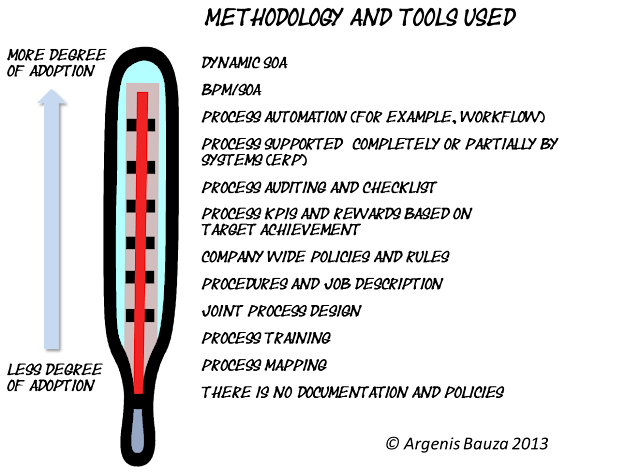How to define Key Performance Indicators (I)
One of the favorite phrases in business is "You Get What You Measure". Not wonder whay there are many business with not so good results:
- 75% of the companies with a Balanced Scorecard do not connect their Key Performance Indicators (KPIs) to their strategic factors.
- Organizations employ too much time and effort gathering data and information that are not key for the decision making process.
- 43% of managers think that capability of taking important decisions are blocked by too much information.
- Estimates suggest that more than 40 billion USD are employed annually in "data warehousing" applications. 60% of that figure is used in data cleansing.
(Based in a research of Accenture).
Let´s Start with the Basics...
In our experience, KPIs (and metrics in general) should have the following characteristics:
- The KPIs must be linked (directly or in cascade) to the success factors of the strategy of the company. So, it is important to understand the strategy and to know with detail how the KPI will measure the progress toward the strategic goals.
- Differentiate KPIs from metrics. KPIs evaluate the success of the company or a function. A metric measure what a function does. Understand well what are the few KPIs that will help us to identify success.
- Focus more on the KPIs that "predict" a possible future outcome (leading KPIs) and less in the KPIs that help to explain what happened (lagging KPIs).
- The responsibility of a role or position on a KPI is directly proportional to the ability to influence such KPI.
- The KPIs should "cascade" transparently along the business. The employees should know how their performance contribute to a higher KPI and to the business outcomes.
How to identify a well defined KPI?
A well defined KPI should comply with the following criteria:
- Enable decision making and control. If the KPI does not help you to take a decision, may be it is not a KPI.
- Relevant. If the KPI does not support the company strategy (directly or as part of a bigger KPI) is not relevant for the company.
- Easy to understand. If the KPIs requires a degree on math to understand it, it is going to be difficult to calculate and to communicate. Make it simple! As Einstein said: "Everything Should Be Made as Simple as Possible, But Not Simpler".
- Measurable. Sounds evident, but KPIs should be extracted directly from the information systems of the company, not as a result of calculations made by somebody in his/her spreadsheet.
- Specific. Do not use KPIs that may be interpreted in different ways. Try to define them in a clear way and try to measure one variable at a time. If you require to represent several KPIs to identify if you are going in the right direction, define a index.
- Think in a target. The KPI will have a target, so start thinking in the desirable objective and the normal ranges for the KPI. If you can not define it, think twice if it is the right KPI.

































